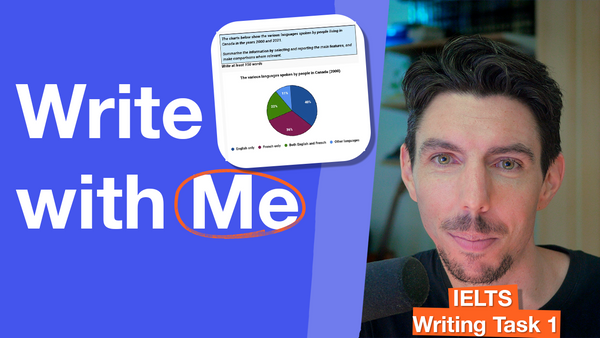🧑🏫 About the Lesson
In this lesson, William models a response to a pie chart-style question for IELTS Writing Task 1. The prompt is about the languages spoken by people living in Canada in the years 2000 and 2021.
By the end of this lesson you'll be able to:
- Introduce a data commentary with an informative :location element
- Analyze data in a pie chart, identify key trends, and support them with data
- Use appropriate hedging and boosting language to control the strength of your claims

📝 Model Response
| The pie chart above represents demographic changes among various language speakers in Canada between 2000 and 2021. The figure indicates a trend towards multilingualism. During this time the number of people speaking only one language lost its majority status. The number of monolingual English speakers reduced by about a quarter (40-32%), while that of French speakers reduced by eight percent, accounting for 42% of the population by the year 2021. Conversely, the number of those speaking more than one language or languages other than English rose to account for the majority of the population. This came primarily from bilingual French & English speakers, who grew from roughly one-fifth of the population at the beginning of the period to nearly half (48%) by the end. Although the portion of people speaking languages other than the official ones of Canada saw a slight increase (+3%) during this time, they still accounted for the minority of the population (14%) overall. Together these groups made up 62% of the population in 2021. |
